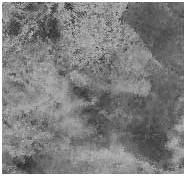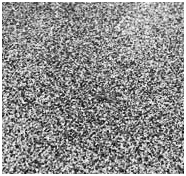Do you want a unique work on the walls of your office, room or area where you live? Wall faux finish Melbourne has become a popular idea alternate to paint work. The faux work on walls can replace various visually appealing appearance of any scene that you love, i.e. stone, fire, water, wood or whatever you want. Faux finishes are becoming very popular as an alternative to standard paint finishes and are designed to replicate the visual appearance of natural materials such as stone & wood.
Wall Faux Finish Melbourne
Wall faux finish, also known as faux painting or decorative painting, is a technique used to create the illusion of various textures, materials, or artistic effects on a wall surface. Instead of using actual materials, such as stone, wood, or metal, faux finishes employ different painting techniques and tools to mimic the appearance of these materials.
Transform the Plain Wall into Appealing Wall
Faux finishes can transform a plain wall into a visually striking and unique focal point. They offer a cost-effective alternative to using real materials, allowing homeowners and interior designers to achieve desired aesthetics without the expense and installation challenges associated with genuine materials.
Types of Faux Finishes in Melbourne
There are numerous types of faux finishes, each with its own technique and desired effect. Some popular faux finish techniques include:
Marbleizing
This technique mimics the look of marble by layering different shades of paint and using tools like brushes, sponges, or rags to create the characteristic veining patterns and depth of marble.
Marbleizing is a faux finish technique that aims to replicate the look of marble on walls. It involves layering different shades of paint to create a base color, typically a lighter hue as the background. Then, using various tools like brushes, sponges, or rags, darker or contrasting shades of paint are applied in veining patterns to imitate the characteristic appearance of marble.
By blending and manipulating the paint with the tools, depth and texture similar to real marble are achieved, resulting in an elegant and sophisticated finish.
Wood Graining
Wood graining replicates the appearance of different wood species on a wall. It involves using specialized brushes and tools to create grain patterns and textures resembling various types of wood, such as oak, mahogany, or maple.
Wood graining is a faux finish technique that recreates the appearance of different wood species on walls. It starts with a base coat of paint in a color similar to the desired wood tone. Then, using specialized brushes and tools like graining combs or rockers, the painter applies multiple layers of translucent glazes or paints in various shades to create the distinctive grain patterns found in different types of wood, such as oak, mahogany, or maple.
The goal is to achieve a realistic wood texture and color variation, providing the warmth and charm of natural wood without the need for expensive materials.
Textured Plaster
This technique involves applying textured plaster or joint compound to the wall surface and manipulating it with tools to create a three-dimensional texture. It can resemble materials like stucco, stone, or concrete.
Textured plaster is a faux finish technique that adds depth and dimension to walls by creating a three-dimensional texture. It involves applying textured plaster or joint compound to the wall surface using trowels or other tools. The plaster is manipulated and shaped to imitate the appearance of materials like stucco, stone, or concrete.
The texture can be customized, ranging from subtle and smooth to rough and pronounced, depending on the desired effect. Textured plaster finishes can enhance the visual interest of a space, giving it a tactile and architectural appeal.
Metallic Finishes
Metallic finishes add a touch of glamour and sheen to walls. They involve using metallic paints or glazes to create a reflective surface that resembles metals like gold, silver, or copper.
Metallic finishes provide a luxurious and glamorous look to walls by incorporating the reflective properties of metals like gold, silver, or copper. This faux finish technique involves using metallic paints or glazes to create a shimmering and lustrous surface.
The paint is typically applied in multiple layers, allowing the metallic particles to catch and reflect light, resulting in a radiant and eye-catching effect. Metallic finishes can be used to highlight specific areas or as an all-over application to add a touch of elegance and sophistication to any space.
Strie
Strie is a technique that creates a soft, subtle, and striated effect on the wall. It involves dragging a brush or a specialized tool vertically or horizontally over a base coat to create thin, irregular lines.
Strie is a faux finish technique that creates a soft, subtle, and striated effect on walls. It involves dragging a brush or a specialized tool vertically or horizontally over a base coat of paint. The brush or tool is moved in a controlled manner, creating thin and irregular lines that vary in intensity and color.
This technique adds texture and visual interest to the wall, providing a delicate and nuanced finish. Strie can be used to create a sense of movement or to complement other design elements in the space.
Venetian Plaster
Venetian plaster is a classic faux finish that originated in Italy. It involves applying multiple layers of plaster with a trowel and then burnishing the surface to create a smooth and polished look. The result is a luxurious and marble-like finish that adds elegance to any space.
Trompe-l’oeil
Trompe-l’oeil, which translates to “trick the eye” in French, is a technique that creates optical illusions on walls. Artists use shading, perspective, and realistic painting to create the illusion of three-dimensional objects or scenes. This technique can make walls appear as if they have windows, doors, or even entire landscapes, adding a whimsical and enchanting element to the space.
Antiquing
Antiquing is a faux finish technique that gives walls an aged and weathered appearance. It involves layering different colored glazes or paints and then distressing the surface with various tools like brushes, sandpaper, or rags. This technique creates the look of old, worn-out walls and adds a sense of history and character to the space.
Sponging
Sponging is a versatile faux finish technique that involves dabbing a sponge onto the wall to create texture and depth. By using different colors and blending techniques, sponging can mimic various effects, such as a mottled or stucco-like finish. This technique adds visual interest and a tactile quality to the walls.
Ragging
Ragging is a faux finish technique that creates a soft and textured look on the walls. It involves crumpling a rag or cloth and then lightly dabbing it onto a base coat to create a mottled or dappled effect. Ragging can be done with one or multiple colors to achieve different levels of complexity and depth.
These are just a few examples of the wide range of faux finishes available in Melbourne. Each technique offers a unique way to transform and enhance the appearance of walls, allowing for creative expression and customization in both residential and commercial spaces. Whether you’re looking for a timeless and elegant look or a more contemporary and artistic finish, faux finishes provide endless possibilities to create a one-of-a-kind space that reflects your personal style.
The suitability of a faux finish depends on the desired style, the overall decor of the space, and personal preference. Faux finishes can be used in various settings, including residential homes, commercial spaces, and even theatrical or artistic productions. They can add depth, texture, and visual interest to walls, creating a unique and personalized ambiance.
It is important to note that achieving professional-looking faux finishes requires skill, experience, and knowledge of the specific techniques involved. Hiring a professional faux finish artist or painter is recommended to ensure the desired effect is achieved and to avoid potential mistakes or inconsistencies.
In summary, wall faux finish is a decorative painting technique that replicates the appearance of different materials and textures on a wall surface. It offers a versatile and cost-effective way to enhance the aesthetics of a space, allowing for creative expression and customization.
Things to consider when hiring Wall faux finish Melbourne Expert
When hiring a wall faux finish expert in Melbourne, there are several important factors to consider. Here are some key points to keep in mind:
Experience and Expertise: Look for a faux finish specialist who has a proven track record and experience in creating high-quality finishes. Review their portfolio or ask for references to see examples of their previous work. An experienced professional will have the skills and knowledge to execute various faux finish techniques effectively.
Specialization and Style: Faux finish experts may have different areas of specialization and styles. Consider your specific project requirements and desired aesthetic. Some experts may specialize in marbleizing, while others may excel in wood graining or textured plaster. Choose a professional whose expertise aligns with the specific faux finish technique you want for your walls.
Customization and Design Consultation: A good faux finish expert should be able to offer customization options and provide design consultation. They should be able to understand your vision, suggest suitable finishes, and help you choose the right colors and techniques for your space. Look for someone who can offer guidance and collaborate with you to achieve the desired result.
Quality of Materials and Tools: Inquire about the materials and products the expert uses for their faux finishes. High-quality paints, glazes, and tools contribute to the durability and overall appearance of the finish. Ensure that the expert uses premium materials that are specifically designed for faux finishes to ensure a long-lasting and professional result.
Reputation and Reviews: Research the reputation of the faux finish expert by reading reviews and testimonials from their previous clients. Check online platforms, such as their website, social media profiles, or review websites, to get an idea of their reputation and the experiences of others who have worked with them. Positive reviews and recommendations can give you confidence in their skills and professionalism.
Licensing and Insurance: Verify that the faux finish expert has the necessary licenses and insurance to operate in Melbourne. This ensures that they adhere to local regulations and have the appropriate coverage in case of any accidents or damages during the project.
Cost and Budget: Obtain detailed quotes from multiple faux finish experts and compare them to determine the most reasonable and competitive pricing. While cost is an important consideration, prioritize the quality and expertise of the professional. Remember that investing in a skilled faux finish expert can result in a superior and long-lasting finish that adds value to your space.
Communication and Professionalism: Evaluate the communication skills and professionalism of the expert. They should be responsive, prompt, and able to clearly communicate their process, timelines, and any potential challenges. A reliable and professional faux finish expert will keep you informed throughout the project and address any concerns or questions you may have.
By considering these factors, you can find a reputable and skilled wall faux finish expert in Melbourne who can bring your vision to life and create stunning finishes that transform your space.




















 Granicrete was very lovely to work with!
I was designing and building a restaurant and Granicrete advised the best flooring to install. Looks great and love the new finish.
Granicrete was very lovely to work with!
I was designing and building a restaurant and Granicrete advised the best flooring to install. Looks great and love the new finish. 